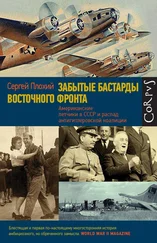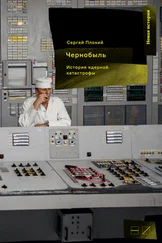Is another nuclear Armageddon like the one at Chernobyl possible today? As the disaster receded in time, the loudest voices were those of optimists who denied such a possibility. Safety procedures at nuclear power plants have indeed improved, the old Soviet-era RBMK reactors have been decommissioned, and new reactors offer a level of safety that nuclear engineers could only have dreamed of in 1986. But then, a quarter century after Chernobyl, came Fukushima. The nuclear disaster of 2011 at the Fukushima Daiichi Nuclear Power Plant indicated a different vulnerability of nuclear reactors. Future accidents like those at Chernobyl or Fukushima may have various causes—a lapse in personnel discipline, a fault in reactor design, or an earthquake. There is also the growing danger of terrorist attacks on nuclear plants—one such attempt was investigated by the Belgian authorities in March 2016. Cyberattacks by hackers are another danger, as evidenced by the one that shut down the Chernobyl radiation monitoring systems in June 2017: the Ukrainian authorities believe that it had originated in Russia.
The decommissioning of the Chernobyl nuclear plant and the construction of a new sarcophagus over the damaged reactor helped to close the most tragic page in the history of the nuclear power industry, but it is still imperative that we draw the right lessons from the Chernobyl disaster. The most crucial lesson is the importance of counteracting the dangers posed by nuclear nationalism and isolationism and of ensuring close international cooperation between countries developing nuclear projects. This lesson is especially important today, when the forces of populism, nationalism, and anti-globalism are finding more adherents in a world that relies increasingly on nuclear technology for the production of energy.
The world has already been overwhelmed by one Chernobyl and one exclusion zone. It cannot afford any more. It must learn its lessons from what happened in and around Chernobyl on April 26, 1986.
Note on Radiation Impact and Measurements
Radiation—the emission or transmission of energy—comes in a variety of forms. The explosion of the Chernobyl nuclear reactor caused the spread of ionizing radiation, which carries enough energy to detach electrons from atoms and molecules. It combines electromagnetic radiation, including gamma rays and X-rays, with particle radiation, which consists of alpha and beta particles and neutrons.
There are three different ways of measuring ionizing radiation. The first assesses the level of radiation emitted by the radioactive object, the second determines the level absorbed by the human body, and the third estimates the amount of biological damage caused by the absorption of radiation. Each of these categories has its own unit of measure, and in all cases old units are gradually being replaced by new ones in the International System of Units (SI). A unit of emitted radiation, formerly known as the curie, has been replaced by the becquerel, with 1 curie equaling 37 gigabecquerels (GBq). The older unit of radiation absorption, the rad, has been replaced with an SI unit called the gray (Gy), which equals 100 rad. Biological damage, formerly measured in rem, has been replaced by the SI unit known as the sievert (Sv).
“Rem” stands for “roentgen equivalent man” and is equal to 0.88 of a roentgen, a legacy unit used to measure exposure to the ionizing electromagnetic radiation produced by X-rays and gamma rays. At the time of the Chernobyl disaster, Soviet nuclear engineers used the old units to measure exposure to radiation and the biological damage caused by it. The first dosimeters they were able to obtain measured radiation exposure in microroentgens per second. The doctors who treated the first victims of the accident measured their patients’ radiation dosage in units called ber, a Russian-language equivalent of rem that stands for “biological equivalent of roentgen.” Converting old units of measure into new SI units is cumbersome, with rem being a welcome exception: 100 rem equal 1 sievert and, in measuring gamma and beta radiation, amount to 1 gray.
Since the rem is closely associated with the roentgen and easily convertible into sieverts, it is the best unit for expressing the impact of radioactivity on the human body as measured at the time of the accident. Today, 10 rem, or 0.1 Sv, is the standard five-year limit of biological damage sustained by nuclear industry workers in the West. The maximum dosage allowed cleanup workers at the Chernobyl power plant in the summer of 1986 was 25 rem, or 0.25 Sv. The biological damage sustained by evacuees from the Chernobyl Exclusion Zone is assessed today at 30 rem (0.3 Sv). Radiation sickness, which is accompanied by symptoms such as nausea and the “nuclear tan”—a darkening of the skin burned by radiation, which does not necessarily lead to death—starts at 100 rem (1 Sv). Half of those who sustain biological damage lethal to bone marrow, which occurs at a level of 400–500 rem, or 4–5 Sv, die within one month. The Chernobyl operators and firefighters who died within a month of exposure sustained 600 or more rem (6 Sv). That corresponds to 6 grays of gamma or beta radiation. Aleksandr Akimov, the leader of the Unit 4 shift at the time of the explosion, absorbed an estimated 15 grays of radiation. He died fifteen days after the accident.
Soviet officials and engineers used kilometers to measure distance and metric tonnes to measure weight. I followed my sources in both cases, while providing equivalents in miles and US tons in parentheses where these units are first mentioned. For those wishing to calculate US measurements, 1 kilometer equals 0.62 miles and 1 metric tonne equals 1.1 US tons. User-friendly calculators are available for most units of measure by typing the two types of units (for example, “kilometers to miles”) into an online search box.
NOTES
PROLOGUE
1. “25 Years After Chernobyl, How Sweden Found Out,” Radio Sweden—News in English, April 22, 2011, http://sverigesradio.se/sida/artikel.aspx?programid=2054&artikel=4468603; Serge Schmemann, “Soviet Announces Nuclear Accident at Electric Plant,” New York Times , April 29, 1986, A1.
CHAPTER 1: CONGRESS
1. “XXVII s'ezd KPSS,” YouTube, 1986, published May 1, 2015, https://www.youtube.com/watch?v=DFtuqNiY4PA.
2. Mikhail Posokhin, Kremlevskii dvorets s ˝ ezdov (Moscow, 1965); Aleksandr Mozhaev, “Vtoraia svezhest',” Arkhnadzor , March 2, 2007, www.archnadzor.ru/2007/03/02/vtoraya-svezhest.
3. William Taubman, Khrushchev: The Man and His Era (New York, 2004), 507–528; Mark Harrison, “Soviet Economic Growth Since 1928: The Alternative Statistics of G. I. Khanin,” Europe-Asia Studies 45, no. 1 (1993): 141–167.
4. Archie Brown, The Gorbachev Factor (Oxford, 1997), 24–129; Andrei Grachev, Gorbachev’s Gamble: Soviet Foreign Policy and the End of the Cold War (Cambridge, 2008), 9–42.
5. Mikhail Gorbachev, Zhizn'i reformy , book 1, part 2, chapter 9 (Moscow, 1995); Valerii Boldin, Krushenie p'edestala: Shtrikhi ko portretu M. S. Gorbacheva (Moscow, 1995), 158.
6. Irina Lisnichenko, “Zastol'ia partiinoi ėlity,” Brestskii kur'er , March 2013.
7. Grigori Medvedev, The Truth About Chernobyl , foreword by Andrei Sakharov (New York, 1991), 40–42.
8. Oleksandr Boliasnyi, “Pryskorennia tryvalistiu visim rokiv,” Kyïvs'ka pravda , December 1, 1985; Aleksandr Boliasnyi, “Kogda iskliucheniia chasto povtoriaiutsia, oni stanoviatsia normoi,” Vestnik 7, no. 214 (March 30, 1999), www.vestnik.com/issues/1999/0330/koi/bolyasn.htm.
9. I. Kulykov and V. Shaniuk, “Vid nashoho novators'koho poshuku,” Kyïvs'ka pravda , March 4, 1986; I. Kulykov, T. Lakhturova, and V. Strekal', “Plany partiï—plany narodu,” Kyïvs'ka pravda , March 8, 1986; V. Losovyi, “Hrani kharakteru,” Prapor peremohy , February 25, 1986; Oleksandr Boliasnyi, “Tsia budenna romantyka,” Kyïvs'ka pravda , February 26, 1986.
Читать дальше
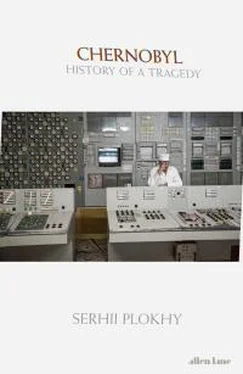

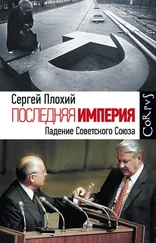



![Сергей Плохий - Чернобыль - История ядерной катастрофы [litres]](/books/385171/sergej-plohij-chernobyl-istoriya-yadernoj-katastrof-thumb.webp)
![Сергей Плохий - Человек, стрелявший ядом [История одного шпиона времен холодной войны]](/books/405163/sergej-plohij-chelovek-strelyavshij-yadom-istoriya-od-thumb.webp)

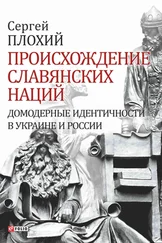
![Сергей Плохий - Потерянное царство. Поход за имперским идеалом и сотворение русской нации [c 1470 года до наших дней]](/books/433093/sergej-plohij-poteryannoe-carstvo-pohod-za-impersk-thumb.webp)
